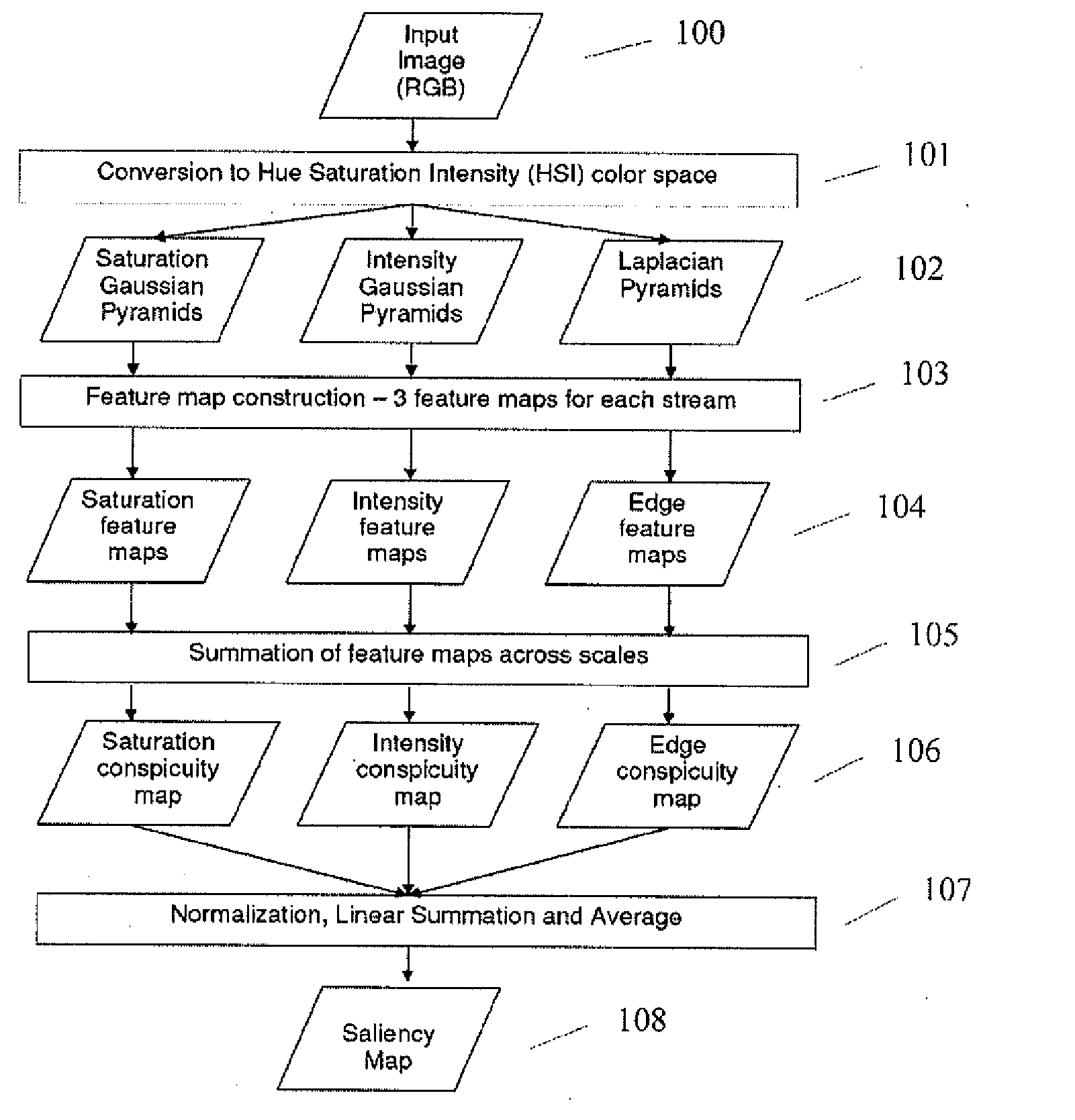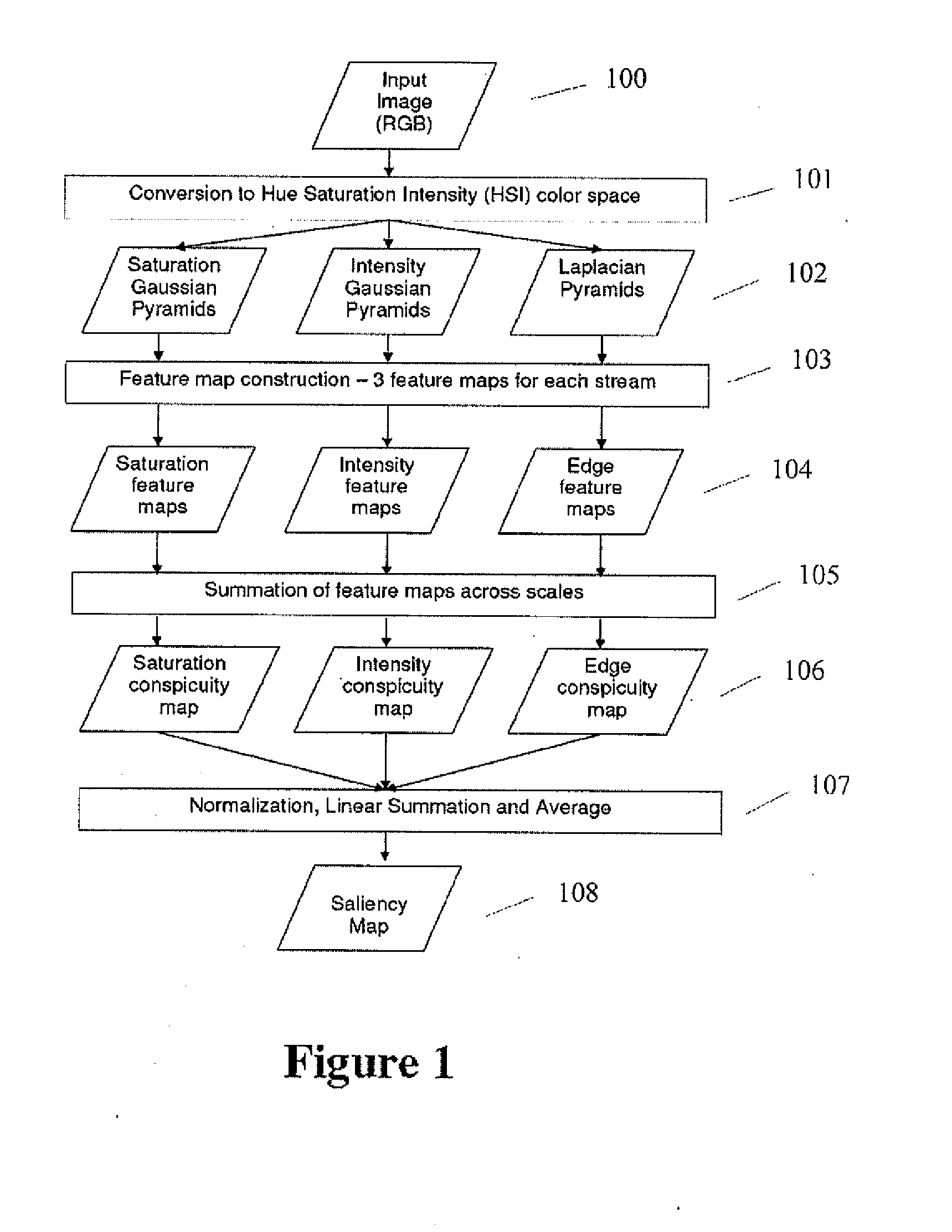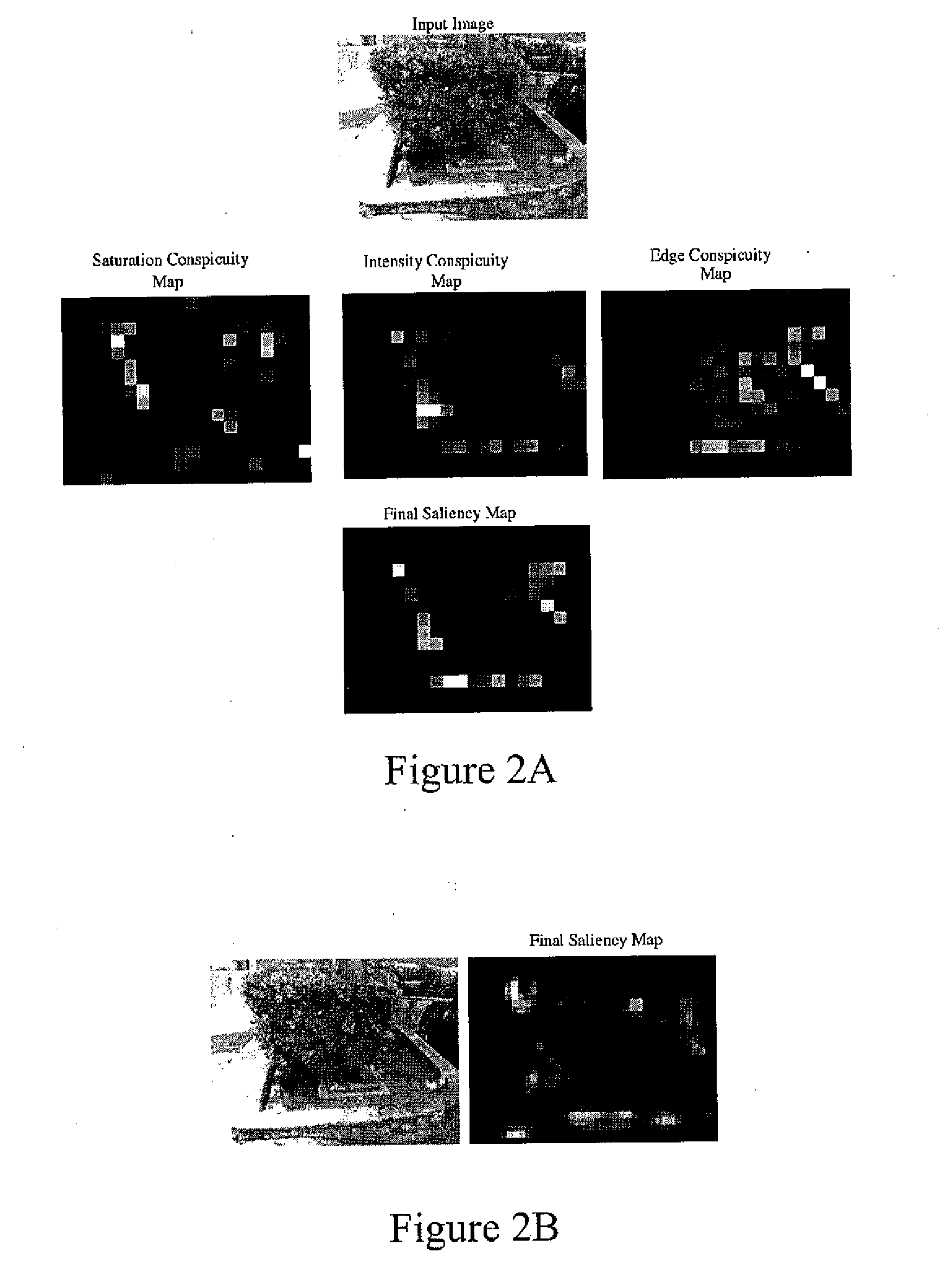Image processing algorithm for cueing salient regions
a processing algorithm and salient region technology, applied in electrotherapy, instruments, therapy, etc., can solve the problem of requiring a much larger number of calculations, and achieve the effect of reducing computational complexity, reducing computational complexity, and reducing the number of calculations
- Summary
- Abstract
- Description
- Claims
- Application Information
AI Technical Summary
Benefits of technology
Problems solved by technology
Method used
Image
Examples
Embodiment Construction
[0014]The present invention is a method of detecting and cueing important objects in the scene and having low computational complexity. Preferably, the method is executed on a portable / wearable / implantable electronics module. The method is particularly useful in aiding implant recipients of retinal prosthesis in understanding unknown environments by directing them to look towards important areas. The invention is not limited to a retinal prosthesis, as the method is useful in video surveillance, automated inspection, digital image processing, video stabilization, automatic obstacle avoidance, and other assistive devices for blind. The inventive method is useful in any image processing application requiring detection of salient regions under processing and power constraints.
[0015]The present invention is loosely based on Itti's model of primate visual attention (hereinafter referred to as the primate model), with several crucial differences. First, the input image data is converted f...
PUM
 Login to View More
Login to View More Abstract
Description
Claims
Application Information
 Login to View More
Login to View More - R&D
- Intellectual Property
- Life Sciences
- Materials
- Tech Scout
- Unparalleled Data Quality
- Higher Quality Content
- 60% Fewer Hallucinations
Browse by: Latest US Patents, China's latest patents, Technical Efficacy Thesaurus, Application Domain, Technology Topic, Popular Technical Reports.
© 2025 PatSnap. All rights reserved.Legal|Privacy policy|Modern Slavery Act Transparency Statement|Sitemap|About US| Contact US: help@patsnap.com



